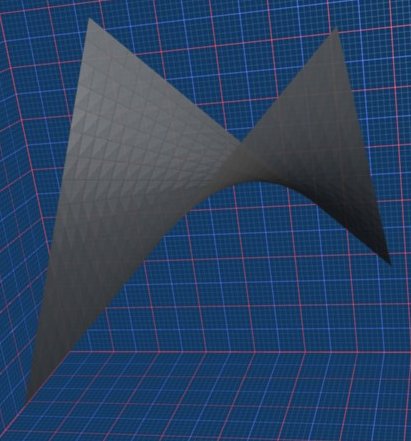An equation is a mathematical expression with an equals sign in it.
Other possible elements of an equation are:
- numbers
- variables
- binary operators (+, -, * or ÷)
- unary operators (+ or -)
- brackets
- powers (xy)
- functions (sin(),log() , etc.)
These are explained below:
Numbers
There are different types of numbers, for instance:
- Z- Integers - whole numbers: ... -3, -2, -1, 0, 1, 2, 3 ... both positive, zero and negative.
 - Real
numbers - numbers which are continuous such as when we are representing points along a line - On this site I will sometimes use the term 'Scalar' to mean 'Real' numbers although strictly the term should be used when scaling a vector - In computer programs real numbers have a finite length and may have decimal point and/or exponent this allows us to approximate most real numbers but it is only an approximation.
- Real
numbers - numbers which are continuous such as when we are representing points along a line - On this site I will sometimes use the term 'Scalar' to mean 'Real' numbers although strictly the term should be used when scaling a vector - In computer programs real numbers have a finite length and may have decimal point and/or exponent this allows us to approximate most real numbers but it is only an approximation. - Q - Rational numbers - Integers and fractions where numerator and denominator are integers.
- Radical Integers - The integers plus any combination of addition, subtraction, multiplication, division and root extraction.
- Qalg - The root of a Z-polynomial - A complex number made up more than just radical integers although it is closed under sum, difference, product, quotient and nth root.
- Modulo 'n' numbers
- C - Complex Numbers - numbers with real and imaginary parts.
- H - Quaternion - Complex number whose elements are complex numbers.
- O - Octonion - Quaternion whose elements are complex numbers.
- Vectors - one dimensional arrays of numbers.
- Matrices - two dimensional arrays of numbers.
and these numbers may be coded in different ways:
- binary
- octal
- decimal
- hexadecimal
Unless otherwise specified we usually assume that numbers are decimal.
Variables
Sometimes an equation contains a number but we don't yet know its value, or we may want to apply the equation to a range of values.
An example of the first is using x as the unknown, for example,
x + 1 = 3
An example of the second might be an equation of a line:
y = 2 * x + 3
In general we use:
x, y, z for unknowns.
a, b, c for values which are not yet specified.
Binary Operators
The operators:
- + add
- - subtract
- * multiply (was x but for computers has to be changed to distinguish it from 24th letter of the alphabet)
- ÷ or / divide
take the two numbers on either side and replace it by a single number.
Addition
In the following plot the height is given by a+b, this gives a flat plane at 45° to both a and b:

Of course the plane is infinite in all directions but here we have only shown a section of the plane.
Multiplication
In the following plot the height is given by a*b, this gives a surface made up of straight lines along a or b directions (bi-linear). If we take a direction at 45° to both a and b then we get a parabola.

Unary operators
The operators:
- + plus
- - minus
apply to the number to the right. '-' inverts the number (subtracts from 0) '+' says the number to the right is positive (the default).
Brackets
When we mix + and * then the answer we get depends on the order that we apply them.
For example
2 + 1 * 3
To clarify this we can put brackets around the operation to be applied first:
(2 + 1) * 3 = 9
2 + (1 * 3) = 5
If we don't specify which has precedence by using bracket then by default * and ÷ have precedence over + and -. So,
2 + 1 * 3 = 5
Functions
A function takes one number and uses it to generate another number. For example the function sin() takes an angle as input and returns the ratio of opposite and hypotenuse in a right angled triangle.
